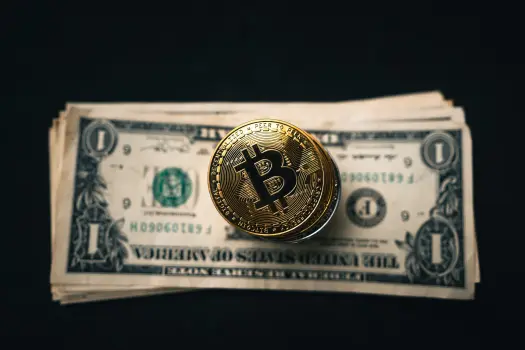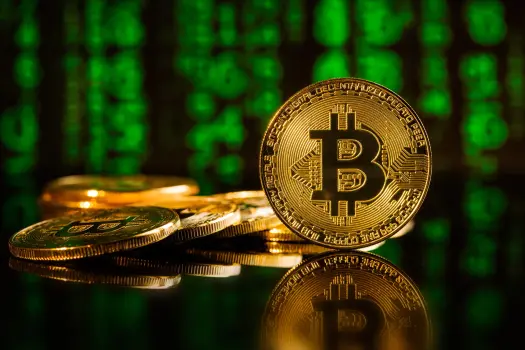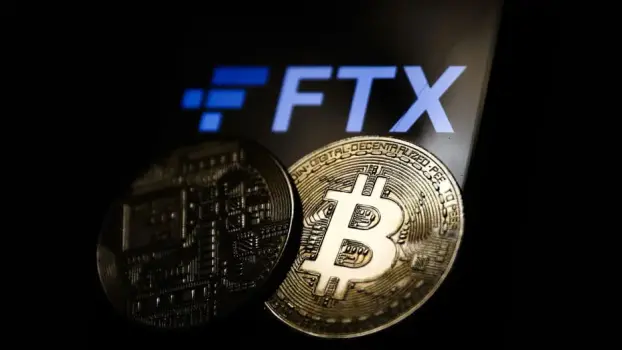What are NFTs and how do they work?
NFTs are unique, non-fungible digital assets with a verifiable ownership record. They are created using blockchain technology, providing a decentralized and secure way to track ownership and transactions. Discover how they revolutionized ownership and investments, and learn how to purchase your own!

You've probably come across the term "NFT" in various conversations, news articles, and online forums. But what exactly are NFTs, and why have they suddenly become so popular? NFTs, or Non-Fungible Tokens, are a type of digital asset that rapidly gained widespread traction, particularly in 2021. From artworks to music and sports highlights, NFTs have transformed the way we perceive digital ownership and authenticity. If you feel bewildered by this topic and haven't quite grasped its essence, this guide will assist you. In the following pages, we will delve into what NFTs are, how they function, and how they've become a way to conduct business and invest. So let's unravel the mystery of NFTs.
What are NFTs?
NFTs are unique, non-fungible digital assets with a transparent ownership record. They are created using blockchain technology, which provides a decentralized and secure way to track ownership and transactions. Unlike fungible tokens such as Bitcoin or Ethereum, which are interchangeable and have the same value in their units, NFTs are one-of-a-kind and possess a distinct value. They can represent anything from a digital artwork to a tweet or a video clip.
The demand, authenticity, and rarity of an NFT determine its value. The more unique and sought-after an NFT is, the higher its value. NFTs have become popular among artists, musicians, and other creators because they allow them to monetize their digital work while retaining ownership. Additionally, NFTs have become a popular way for investors to speculate on the value of digital assets and participate in the growing NFT market.
NFTs are created and traded on various blockchain networks, including Ethereum, Binance Smart Chain, and Flow. To create an NFT, the creator needs to upload their digital asset to an NFT marketplace, where it will be tokenized and transformed into a unique NFT. The creator can then set a price for the NFT and put it up for sale.
How do NFTs work?
NFTs are created using smart contracts, which are self-executing contracts with the agreement terms between the buyer and seller written directly in lines of code on the blockchain. Smart contracts enable the automatic execution of transactions and property transfers, making them ideal for NFTs.
When an NFT is created, it is assigned a unique identifier, which is stored on the blockchain. This identifier contains information about the NFT, such as its creator, owner, and transaction history. The blockchain functions as a public ledger, allowing anyone to view the ownership and transaction history of an NFT.
When an NFT is sold, the ownership record is updated on the blockchain, and the buyer receives the unique identifier of the NFT. This identifier proves that the buyer is the legitimate owner of the NFT and can be used to transfer ownership or sell the NFT in the future. All of this is executed through NFT buying and selling platforms. The most famous one is Opensea.io.
The history of NFTs
NFTs have existed since 2017, but they only gained public attention in 2021. The first NFT was created on the Ethereum blockchain in 2017 by a project called CryptoKitties. CryptoKitties were digital collectibles in the form of cartoon cats and quickly became popular, causing congestion on the Ethereum network.
Since then, NFTs have evolved to encompass a wide range of digital assets, from artworks to music and sports highlights. In March 2021, a digital artwork NFT by the artist Beeple was sold for $69 million in a Christie's auction, becoming the most expensive NFT ever sold.
What is the future of NFTs?
The future of NFTs is still uncertain, but many experts believe they will become an increasingly important part of the digital economy. NFTs have the potential to revolutionize the way we think about ownership and authenticity in the digital world and may open up new opportunities for artists, musicians, and other creators.
NFTs can also become a new asset class for investors, offering a way to diversify their portfolios and participate in the growing NFT market. As more artists and creators adopt NFTs, the demand for them is likely to increase, driving up their value and creating new investment opportunities. There are already several investors who are "NFT hunters," constantly searching for collectibles that can gain prominence and increase in value. When a "hunter" finds these opportunities, they buy the NFT at a low price and sell it when its value increases.
Main NFT Marketplaces
NFTs are traded on various marketplaces, including OpenSea, Rarible, and SuperRare. These platforms allow creators to list their NFTs for sale and buyers to purchase them using cryptocurrency.
The NFT market exploded in 2021, with sales reaching record levels. In the first quarter of 2021, NFT sales surpassed $2 billion, compared to just $13.7 million in the same period in 2020. The growing interest in NFTs has led to the creation of new markets and platforms catering to the needs of creators and investors.
How do I buy NFTs?
You must first create a cryptocurrency wallet and fund it with the cryptocurrency that the NFT marketplace uses in order to purchase an NFT. For example, if you want to buy an NFT and the seller only accepts payment in Ethereum, you need to purchase Ethereum and store it in your wallet to make the NFT purchase. Once you have the cryptocurrency in your wallet, you can search the NFT markets for assets of your interest.
When you find an NFT you want to purchase, you can either place a bid or buy it immediately, depending on the marketplace. After buying an NFT, it will be transferred to your wallet, and you will be the legitimate owner of the digital asset.
Celebrities purchasing million-dollar NFTs
Celebrities have also joined the NFT movement, with many of them creating and selling their own digital assets. In March 2021, former Twitter ex-CEO Jack Dorsey sold his first tweet as an NFT for $2.9 million. Other celebrities who have sold NFTs include Grimes, Paris Hilton, and Mark Cuban.
The involvement of celebrities in the NFT market has helped raise awareness and increase the value of NFTs. It has also added a new layer of excitement and buzz to the growing digital asset market.
Is it worth investing in NFTs?
NFTs are a new and exciting development in the world of digital assets. They offer a way for creators to monetize their digital work and maintain ownership over it, while providing investors with a new asset class to diversify their portfolios.
While the future of NFTs is still uncertain, it is clear that they have already had a significant impact on the digital economy. As more artists, musicians, and other creators adopt NFTs, the demand for them will likely increase, driving up their value and creating new investment opportunities.
Whether you're a creator or an investor, it's crucial to grasp the fundamental concepts of NFTs and how they operate. With this guide, you should already have a basic understanding of what NFTs are, how they work, and how they've become a way to conduct business and invest. Keep researching to comprehend the logic of digital assets and how this market operates, so you can make an informed decision on whether or not to invest in them and which strategy to adopt.
Trade cryptocurrencies with safety and transparency. Download the digitra.com app! You will also get an instantly 10 DGTA tokens for new customers.



